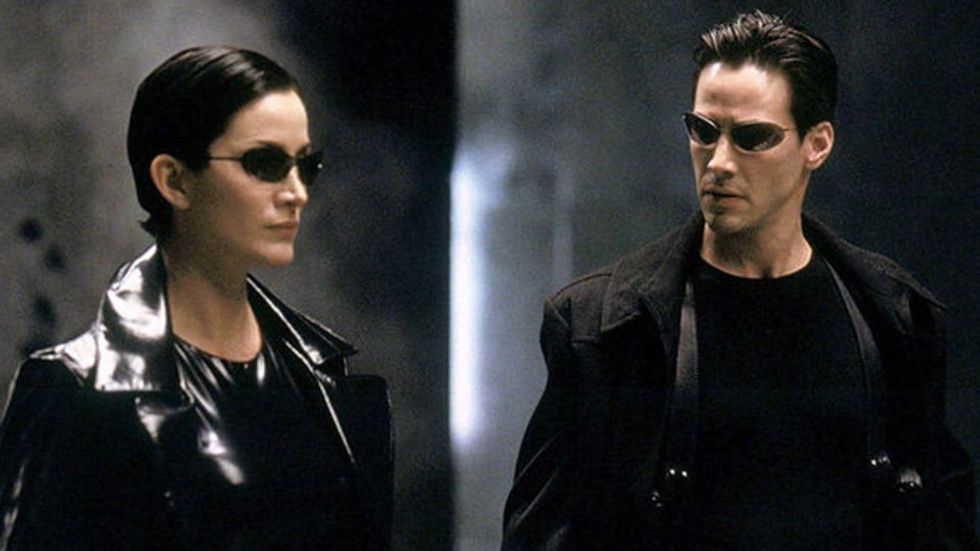
Sometimes, when I’m writing, I feel like I can see the words swirling around my head, and then I am constantly grabbing at them to get onto the page. The more I write, the more in control of an idea I can feel.
And that’s why I was intimidated by the midpoint reversal at first.
This pivotal moment serves as a turning point, shaking up the story’s direction and significantly raising the stakes. A strong midpoint reversal can propel your script from ordinary to extraordinary.
Today we’re going to go over the idea and look at how you can bend it to your will.
Let’s dive in.
What is a Midpoint Reversal?

The midpoint reversal is a major event or shift that occurs roughly halfway through your screenplay. It disrupts the protagonist’s trajectory, forcing them to reevaluate their actions, goals, and understanding of the world around them.
It can be a shocking plot twist, a sudden betrayal, a jarring revelation, or an escalation of the existing conflict. Essentially, the midpoint reversal changes the game.
Why is The Midpoint Reversal Important?

- Combats the Act Two Blues: Many stories suffer from the dreaded “mushy middle,” where the plot meanders, tension fizzles, and audience interest wanes. The midpoint reversal combats this, injecting a fresh dose of conflict and urgency.
- Raises the Stakes: A strong midpoint reversal makes it clear to both the characters and the audience that things have become significantly more difficult. Obstacles grow tougher, the cost of failure rises, and the protagonist must dig deeper to prevail.
- Character Development:The midpoint reversal often tests the protagonist’s determination, prompting them to make difficult choices, confront their flaws, and reveal their true nature. Through adversity, characters evolve.
Examples of Midpoint Reversals

There are lots of different examples of midpoint reversals. These three I picked because they actually change the trajectory of the story, and keep the audience on their toes.
- The Empire Strikes Back: Luke Skywalker learns the shocking truth about his father, Darth Vader. This revelation shatters his worldview and forces him to confront darkness within his heritage.
- The Matrix: Neo discovers that the world he lives in is a simulation. This mind-bending revelation upends his reality and propels him on a journey to discover the truth.
- Toy Story: Woody witnesses Buzz Lightyear become Andy’s new favorite toy. Woody’s jealousy and insecurity lead to a series of conflicts that test his friendship with Buzz.
Writing Your Own Midpoint Reversal

Writing these midpoints used to intimidate me because they felt like I was changing the story I came up with so dramatically that I’d be lost in the back half of the second act.
But I found that when I embraced that challenge, the script would be so much better, and they sold more frequently as well.
These are the strategies I use to get those midpoints correct.
- Connect to the Story’s Theme: Your midpoint reversal shouldn’t feel arbitrary. Align it with the core theme or message of your screenplay. What lesson does your protagonist need to learn? What truth needs to be revealed?
- Foreshadowing: Subtly hint at the direction of the midpoint reversal earlier in your script. This adds a sense of inevitability and makes the reversal feel both surprising and earned.
- Consider Multiple Reversals: While there’s typically one major midpoint reversal, you can incorporate smaller reversals throughout the second act to continuously keep the audience on their toes.
- Changed Protagonist: The reversal forces some kind of internal change in your protagonist—a new resolve, a fresh perspective, or a shift in priorities.
- Heightened Conflict: The conflict intensifies, requiring the protagonist to adapt, strategize, and possibly even make sacrifices. The antagonist or opposing forces become more formidable.
- Shift in Tone: The overall tone of the story may shift after the reversal. Things can become darker, more hopeful, or more suspenseful, depending on the nature of the event.
The midpoint reversal is a powerful tool for any screenwriter. By using it strategically, you can breathe new life into your story, captivate your audience, and give your characters the opportunity to truly transform.
Remember, it’s not just about throwing in a twist for the sake of it. The best midpoint reversals feel organic, impactful, and propel your protagonist towards a truly satisfying climax.
Let me know what you think in the comments.
Author: Jason Hellerman
This article comes from No Film School and can be read on the original site.
